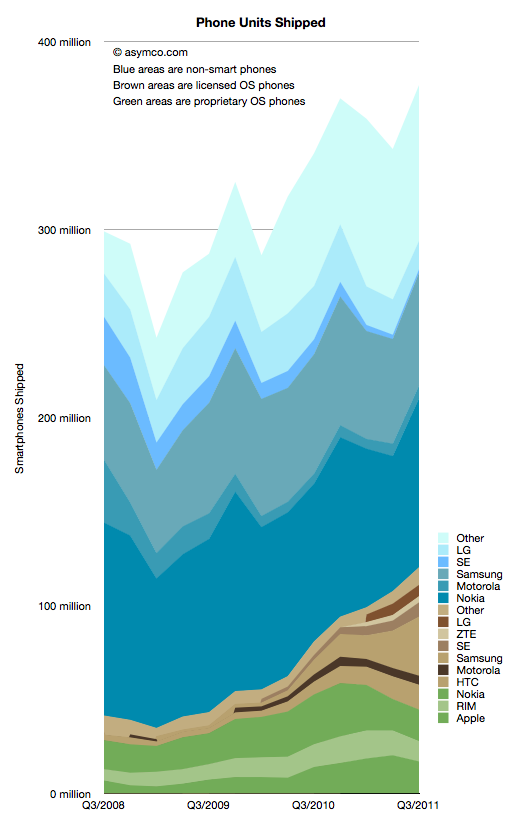 He called with the kind of breathing that usually was reserved for marathons. It was a clear signal, and yet I was still having trouble separating the heavy breathing from the message. Perhaps he’d be inclined to tell me again what it was he was after.
He called with the kind of breathing that usually was reserved for marathons. It was a clear signal, and yet I was still having trouble separating the heavy breathing from the message. Perhaps he’d be inclined to tell me again what it was he was after.
“Ok, look. I’ll explain it again. We have a major opportunity here. I… I just can’t say it any clearer. They want to give us money to do this video project, but we’ve got no working camera! You have to find something now! The deadline is only a few hours away.”
I had heard my friend gone down this line before. Moments before we landed here he was again talking about how we needed just one more thing and pressing me into finding it with that vendor just before our gate. Then there was that time when, in the middle of the desert no less, he and I found ourselves with one canteen of water and no gas in our truck. He wanted to walk over “just one more hill,” and I was wanting “just one more moment of rest.” Again, his stubborness came to a head and we made it over that hill to find a small camp of bedouins who had a few gallons of petrol to spare. Whenever I travelled with him, it was like clamaity and opportunity were also traveling partners.
This time things were a little easier. We were in the middle of this metropolis we were both familiar with, due to an even we were attending there. He and I decided that before we’d connect with the other event attendees, that we’d take some time to scout for examples of ministry happening around the city. We figured that if we had a few hours of footage, and about an hour or so of prep, that we could blow away our fellow attendees with a picture of life here and the opportunity it presented to our efforts.
Yet, here were were again. Staring at the ground where the bus just left. Left behind were the pieces of an $800 camera. You know, the kind you see in a magazine and then when you get it into your hands, you realize that the magazine lied – it was a ton better in person? Yea. We had that kind of camera. And on it both still and video footage of life in this dear city. We had everything – people getting arrested from what looked like a domestic dispute; a funeral and wedding procession; even some images of kids in school attire, looking as if they were off to another lesson. We had all kinds of media relevant to the opportunities in this city. But, that was about 10 minutes ago. Right now, we were staring at that opportunity wasted with a destroyed camera.
“Oh, no! Oh, no. This isn’t happening. We can’t come this close to that vision and it all goes away on a simple drop?”
He paced back and forth as I bent down to pick up the pieces – hopefully, there was a recipt we could use after the conference to possibly get a warranty replacement. I don’t know though. We were both exiting the bus when it dropped. It was just a slight brush from someone going in the opposite direction – and then it just kind of fell unlatched from the neck-strap and onto the ground. We didn’t see where it went – only heard. Shame that bus didn’t get a flat from running over it.
“Look, all we can do now is just continue onto the conference. There might be an opportunity another time to do something like this.”
“But, you don’t understand,” he canjoled. “We aren’t going to get an opportunity as clear as this to tell the story of how we see ministry needing to be here without those pictures and videos. They’ve heard us talk about it over and over. We’ve shown them statistics. They barely let us come to this conference. That video, that would have put us over the top. And now…”
I’ve seen my friend like this before (like I said). And he responded the same way that he usually does once the pace-induced pity party starts to end. He pulled out his mobile from his pocket and called his sister. She was always able to came him down and help him to find a moment of faith where he wanted to just throw it all away.
But, as he pulled the phone to his ear, I noticed something differernt. That didn’t look like the mobile that he usually carries. “Hey, when did you get a new phone?”
“Oh, this. Well, I purchased it online from some guy who was selling it. It looked nice and apparently had a decent camera so I went for it.”
“Really? What model is it?”
“Uh.” He turned the mobile around to me to show me the name and model printed on the front.
“Oooh! Dude. You’ve got the Nokia N8!”
“Uh, yea. And… is that supposed to bring my camera back or something?”
“Dude. You’ve got probably the best camera phone available right now. How could you not know that you had that phone?”
He looked back at me as if I just came down off the mountain with some stone tablets. I don’t know everything about mobiles, but I have seen what people have been able to produce from that phone. Its simply astounding.
“Hey, that model has a really decent camera. And, some on-board video editing software. If we can snap some pictures, we might be able to get that video done after all.”
He looked back at me with that “I wouldn’t believe you if you were Jesus himself” look. “Dude. There’s no way a camera on a phone can do something of the quality that we going for. I can’t believe you would…”
“Shhh… just gimme your phone for a second. I think I can find the app.”
Ok. Here’s the place where I should admit that I don’t have a clue as to what I’m doing. I’m the brains behind pulling things together. He’s the techie. And I’m so surprised that he didn’t know about that feature. I remember seeing some videos produced on that N8 published online. Amazing stuff. Nothing that I could do. Clearly, the people putting that out there had much more talent than I. But, a phone, making stuff like that… wow.
“Uhm uhmmm, ok. Here it is. Video Editor.” Clicking on the app I get this screen asking me if I want to take video or pictures already recorded on the device, or simply make a slideshow. “Look. See. All we have to do is take some pictures and videos with the phone and then we can make a video out of it. Shouldn’t be that hard.”
Ding. Ding. Ding.
The city clock. Its on the hour and we’ve got just an house before the conference if we are going to pull this off. I shovel up the pieces from the camera that aren’t too small to pick up and just put it in the camera bag. Then I see it.
“Hey. Look. Look at this! The memory card doesn’t look damaged. Do you think it might still work?”
“Here. Give it to me.”
He took the memory card and started pulling at it with his fingertip. Then, almost like one of those Russian egg dolls, a little card appeared from the larger one.
“If this card works. We might be in business.”
He removed a little door from the side of the N8 and inserted the chip-looking card. The phone beeped and then he started tapping the screen. Something was happening, but I wasn’t sure what was going on.
“Yep. Yea. Uh…wait. Uhmmmm. This might look good. Ok. Yea, yea. Whoohoo! Look, look! The pictures are still there. And…wait a sec… yea. The videos are there too. This just might work.
For the next hour, my friend and I sat down and created on this little phone a video that we woul later show to this conference. They were midly impressed with the video, until we told them it was completly produced on the mobile phone. We related the story on how our camera broke just hours before, but the on-board software on thie phone was enough to actually get us to this point. Sure, it had some rough spots (text formatting, and we didn’t really have much of a script), but for coming from a mobile, it was quite impressive.
As my friend and I walked out of the conference a few days later. He reached over to me to shake my hand. “You know something? I would have never even paid attention to the fact that a mobile phone could do so much if you’d not remembered those videos you’d seen. Thanks. I think that I’ll ignore getting a new camera for a while and see what I can do on this little guy.”
“You aren’t the only one amazed. I’d only seen a few things online. But, to acutally be a part of producing it. Well, that’s just pretty decent. I’m wondering if other phones can do this now. That would be a better photography class than the one we pitched… “Create the Next Great Film on your Phone.” Has a nice ring to it, doesn’t it?”
“It does. Though, I’m not sure we should just teach folks how to make a movie with it. There’s a better opportunity out there to capture.”
 A good deal of the activity in mobile has talked about the potential for video media to be a catalyst for conversations, conversions, and education/discipleship. Here’s a report sent from the Kiosk Evangelism Project about such a change happening in SE India:
A good deal of the activity in mobile has talked about the potential for video media to be a catalyst for conversations, conversions, and education/discipleship. Here’s a report sent from the Kiosk Evangelism Project about such a change happening in SE India: He called with the kind of breathing that usually was reserved for marathons. It was a clear signal, and yet I was still having trouble separating the heavy breathing from the message. Perhaps he’d be inclined to tell me again what it was he was after.
He called with the kind of breathing that usually was reserved for marathons. It was a clear signal, and yet I was still having trouble separating the heavy breathing from the message. Perhaps he’d be inclined to tell me again what it was he was after. Over at Church Mag was a post talking about some
Over at Church Mag was a post talking about some  Around this point, barring anything having happened to me while on the road in the past 24 hours, we’re almost starting with a presentation titled From the Toilet to the Pulpit at
Around this point, barring anything having happened to me while on the road in the past 24 hours, we’re almost starting with a presentation titled From the Toilet to the Pulpit at 
